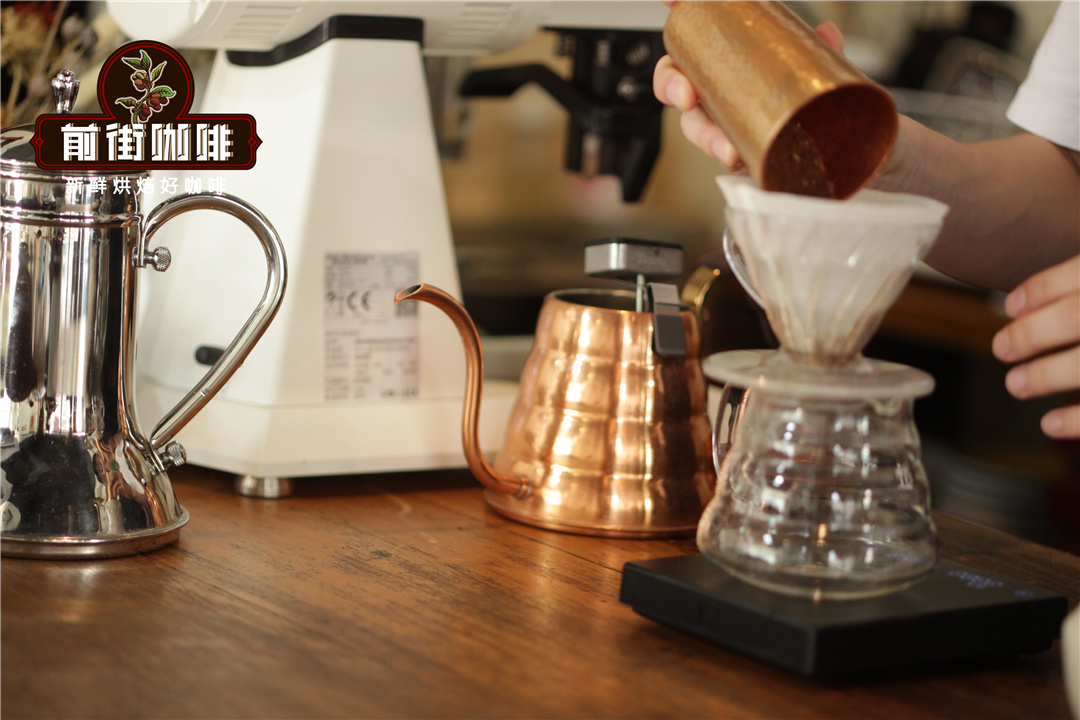Kenya Coffee Bean Classification E Elephant beans where is the coffee grading name?
Located in East Africa, Kenya, which runs across the equator and borders on the Indian Ocean, mainly grows Arabica beans, especially its well-known coffee bean varieties SL28 and SL34, which are mixed-lineage coffee beans cultivated in the laboratory. It was published by the Scott Laboratories laboratory in 1930, so it was named SL. In recent years, it is highly respected by the boutique coffee industry. Kenya Coffee, with its complex flavor and rich fruit aroma, gives people a sour and sweet tasting experience on the whole, because of the advantages of geographical environment, including different topography, such as high altitude, abundant rainfall, good soil quality, micro-climate, and so on. to enable coffee to multiply, but also to achieve many areas conducive to the growth of coffee.
In Kenya, the main producing areas are: Neri Nyeri, Gelinya Kirinyag, Ruiru Ruiru, Sika Thika, Chiambu Kiambu, Mulanga Muranga and Kenya West on the western side of Mount Kenya. Among them, Neri Nyeri is the most common Kenyan coffee producing area in Taiwan, with an altitude of 1200 to 2300 meters above sea level and rich volcanic red soil with rich nutrition. The coffee produced by Neri Coffee is of excellent quality, sufficient yield and strong acid flavor, which can be said to be the most familiar typical Kenyan coffee. Other areas are mostly small farmers' estates, with elevations between 1300 and 2200 meters above sea level. With different environmental advantages in different regions, coffee beans of outstanding quality and unique flavor are selected and sent to processing plants for further treatment. it has also created many coffee lovers will take the quality of more stringent coffee processing plants as a guide for bean selection.

Classification of Kenyan coffee beans
Most Kenyan coffee beans, regardless of their producing areas and varieties, are graded according to the size of coffee beans, ranging from E, AA, A, AB, B, PB, and C. the most common types in Taiwan are AA and AB. Among them, Kenya AA, with moderate acidity and full texture, can be said to be the highest quality and most recognized by boutique coffee.
E (elephant bean)
E, which stands for elephant Elephant, is a kind of coffee bean in which two beans are combined into one bean, which mainly grows into super-large coffee beans because of abnormal development, so the number is also very rare, the size of coffee beans is about 7.1mm.
AA
It is the common level of Kenya boutique coffee beans, and it is also one of the most recognized beans in boutique coffee. The size of coffee beans is about 6.7~7.1mm.
AB
Most Kenya coffee beans fall into this category, named for a mixture of An and B coffee beans, which are about 6.8mm in size and about 6.2mm in size.
A
The size of coffee beans is about 6.8mm.
B
The size of coffee beans is about 6.2mm.
PB
The small round bean Peaberry, because there is only one seed in the fruit, forms small and round coffee beans. Some people especially like the flavor of this small round bean, so although the quantity is rare, it will be singled out for sale.
C
The size of coffee beans is less than B, about 5.6~6.0mm.
TT
This kind of coffee beans are removed from AA and AB beans because their weight is not up to standard and some of them are even defective.
T
This kind of coffee beans are removed from C-grade beans because their weight hardness is not up to standard and some of them are even defective.
MH / ML
Coffee beans that are overripe and fall to the ground are not exported because of their poor quality and are mainly circulated in the Kenyan market.
In Kenya's boutique coffee, in addition to being officially classified as AA and AB, Kenyan exporters also specifically classify Kenyan coffee beans. The common flavor categories are AA TOP, AA+, AA++, AB+, AB TOP and AA FAQ. Most raw bean manufacturers are tested by their own cups, and add TOP to coffee beans with high quality and special flavor (such as AA TOP, AB TOP), but The part of the flavor classification is marked by the manufacturer, and it is not directly related to the Kenyan coffee official.
Kenyan boutique coffee beans
In 1930, Scott Laboratories laboratory published the SL series of coffee bean cultivation, which successfully planted varieties with both quality and resistance to the impact of the external environment. SL28 and SL34-SL28 were the fusion of French missionaries, mocha and YemenTibica coffee varieties, with excellent sweetness, changeable layers of flavor, but still balanced and smooth, while taste similar to citrus and black plum. Although the flavor of SL34 is similar to that of SL28, it is more mellow and full-bodied as a whole, and there are more changes in taste buds that extend from sour to sweet, which adds more sparks to the taste. Besides the pedigree of French missionaries and Yemen Tibica, SL34 also has more bourbon fusion and is more adaptable to the ever-changing climate.
In recent years, the emerging variety K7, mainly planted in low altitude areas, is also more drought-tolerant than other varieties because of its deep root development, while Batian and R11, like the SL series, are bred in the laboratory and are mainly used to enhance viability and resist diseases related to coffee beans.
Processing methods of Kenyan coffee beans
Kenya coffee beans are mainly processed by water washing and sun drying, of which water washing is the most common. Coffee farmers bring out the uniqueness of Kenyan coffee by soaking, fermenting, removing pulp, drying raw coffee beans and other fine steps. Kenya coffee beans, the most prominent feature is to drink fruit acid, berries and other aromas, the flavor is a bit similar to Wumei, Luoshen and other taste Because of the uniqueness of coffee's partial acidity, although it is impossible to capture the taste buds of all drinkers, coffee lovers who love strong acidity fall in love with the flavor of Kenya coffee beans. It's definitely an amazing feast!
Important Notice :
前街咖啡 FrontStreet Coffee has moved to new addredd:
FrontStreet Coffee Address: 315,Donghua East Road,GuangZhou
Tel:020 38364473
- Prev

Is coffee known for its citrus, bright floral flavor a geisha? Panama coffee varieties
Panama's fine coffee beans are named for their sweet and sour balance, gentleness and delicacy, and unique and rich aroma. Among them, Geisha/Rose Summer Coffee, which is famous for its rich citrus and bright floral flavor, is the most famous. In recent years, it has been highly praised by coffee lovers. Not only has it set off a wave of bidding for Geisha coffee beans, but also various countries have competed to cultivate it. Panama near Costa Rica and Colombia
- Next

What are the key elements of making good coffee? Introduction to the extraction principle of hand-made Coffee
Coffee extraction is a process of extracting substances from coffee powder by dissolving water through coffee powder, and it is also a scientific principle that can be tested. When the water comes into contact with the coffee powder, most of the water-soluble substances are taken out and fused with each other, and then the various coffee flavors, whether perfect or not, are extracted, and finally a cup of coffee is brewed. Coffee extraction is a complex
Related
- Beginners will see the "Coffee pull flower" guide!
- What is the difference between ice blog purified milk and ordinary milk coffee?
- Why is the Philippines the largest producer of crops in Liberia?
- For coffee extraction, should the fine powder be retained?
- How does extracted espresso fill pressed powder? How much strength does it take to press the powder?
- How to make jasmine cold extract coffee? Is the jasmine + latte good?
- Will this little toy really make the coffee taste better? How does Lily Drip affect coffee extraction?
- Will the action of slapping the filter cup also affect coffee extraction?
- What's the difference between powder-to-water ratio and powder-to-liquid ratio?
- What is the Ethiopian local species? What does it have to do with Heirloom native species?

